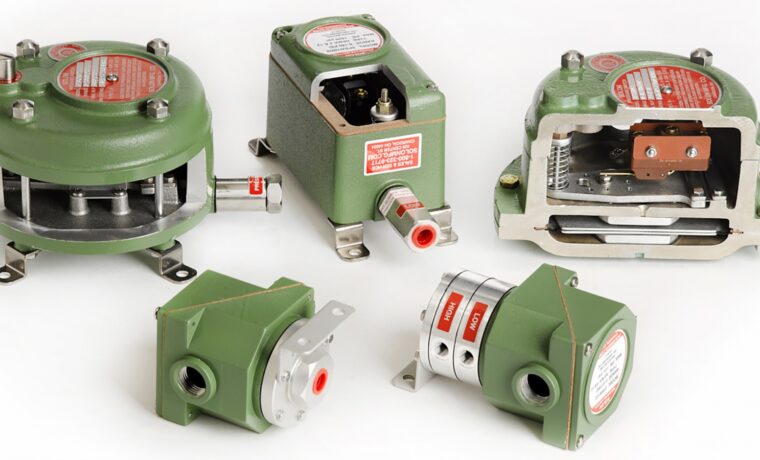A pressure switch is typically an electromechanical device that triggers via pressure to turn on and off an electrical circuit. Individuals can find several pressure switches to meet industrial applications and operating environment requirements. For instance, a tridelta pressure switch can be used in process control systems to maintain consistent pneumatic or mechanical pressure. Moreover, these devices activate and deactivate the pumps in fluid systems when pressure thresholds are reached. This article lets one understand the essential components and applications of pressure switches.
Essential Components of Pressure Switches
Generally, Open (NO) and normally Closed (NC) are two types of pressure switches. Below given are the critical components of a pressure switch:
- Diaphragms: A diaphragm is made of a pliable material sensitive to pressure and acts as the pressure detection element.
- Adjustment Spring: The primary function of an adjustment spring is to vary the set or cut-out points. Even some tridelta pressure switch have separate springs to control the set and set out points.
- Auto/Off Lever: An auto/off lever activates the switch and is used to turn it off manually. This level helps in deactivating the switch during installation or maintenance. Some switches have a knob instead of a lever, but the principle remains unchanged.
- Electrical Contacts: With the help of electrical contacts, the current from an external power source passes through them when they touch.
- Terminals: Terminals are used to connect the external power source with the contacts.
Applications of Pressure Switches
The typical applications of pressure switches like a tridelta pressure switch are as follows:
- Compressed Air Systems
Pressure switches are installed in the compressed air systems to turn the compressor on or off at a specific time.
- HVAC Equipment
Pressure switches act as a vital safety function in the HVAC systems like furnaces. For instance, power switches turn off the furnace when it detects negative pressure generated by the draft-inducing motor. Moreover, another application of these switches is detecting leaks by monitoring gas pressure.
- Pumping Systems
Pressure switches are installed in the pumps to maintain water levels in a reservoir by turning the pump on and off as necessary. When the water pressure reduces below a particular limit, the NO contacts close for driving a current through the pump. And when the water pressure reaches to pre-specified limit, the contacts open to cutting off the current to the pump and, thus, stop the pumping operation.
- Process Equipment
Both fluid and gas flow control equipment has a pressure switch for maintaining a flow at a consistent rate.
Conclusion
A pressure switch is a passive, electromechanical device that requires the presence or absence of pressure to function. These devices activate and deactivate pumping systems, thermostats in HVAC systems, furnaces, compressed air systems, and many others. If a specific machine is working efficiently but not the pressure switch, it’s best to get it repaired or replaced. Even many thermostat sellers resell used pressure switches. An individual needs to inform the machine’s make and model, and the seller will provide him with a well-functioning, cost-effective second-hand pressure switch.














